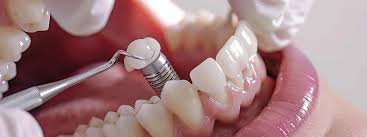Dental implants are a long-term solution for replacing missing teeth. An implant consists of a titanium post, which is surgically placed into the jawbone to act as an artificial tooth root. This post provides a stable foundation for a replacement tooth, or crown, that is custom-made to match your natural teeth in color and shape. Understanding the process can help you prepare for your appointments and follow-up care. Here’s information on dental implant procedures and how you can prepare for treatment:
First Part of the Procedure
The initial phase of the dental implant process involves consultation, surgery, and a healing period. Proper preparation and care during this stage are fundamental for the successful integration of the implant with your jawbone. Before your procedure, you will have a comprehensive consultation with your dental implants specialist.
Before Implantation
During this visit, your specialist will conduct a thorough examination, which may include X-rays or 3D imaging to assess the health of your jawbone and determine the optimal placement for the implant. This is an opportunity to discuss your medical history, any medications you are taking, and the details of the treatment plan. You may be provided with pre-operative instructions, including guidelines on eating or drinking before surgery and arranging for someone to drive you home.
During Implantation
On the day of the procedure, a local anesthetic is typically administered to numb the area being treated. Once you are numb and reclined, your implant specialist will begin the first part of your restorative dental treatment. Here are the steps of the implantation process:
- First Incision: The specialist makes a small incision in the gum to access the jawbone.
- Drill Space: A precise space is created in the bone using a specialized drill.
- Implant Post: The titanium implant post is carefully placed into the prepared site.
- Close Incision: The gum tissue is closed over the implant to protect the area as it heals.
- Integrative Healing: The implant is left to integrate with the bone, a process known as osseointegration, which provides a stable foundation for the future restoration.
After Implantation
After the implant is placed, a healing period is necessary for osseointegration to occur. This can take several months, as the jawbone needs time to grow around and fuse with the implant post. Your specialist will provide specific post-operative care instructions to support this healing process. These instructions may include recommendations for a soft food diet, proper oral hygiene techniques to maintain the surgical site’s cleanliness, and guidance on managing any discomfort.
Second Part of the Procedure
Once the implant has fully integrated with the jawbone, the final stage of the procedure can begin. This phase focuses on attaching the abutment and placing the final crown, completing the restoration of your tooth. After the osseointegration period of healing, you will return to your specialist for the second part of the procedure.
Your Final Restoration Procedure
A minor surgery may be necessary to expose the top of the implant and attach an abutment, a small connector piece. The abutment serves as the link between the implant post and the final crown. Once the abutment is in place, the final step is to connect the natural-looking crown.
Your Recovery
Your specialist will check the fit and your bite to verify everything is correct. The result is a replacement tooth that looks, feels, and functions much like a natural tooth. A significant benefit of this procedure is the restoration of your ability to chew and speak more easily. Dental implants also help maintain the structure of your jawbone and prevent surrounding teeth from shifting. With proper care, they can be a durable and lasting solution.
Learn More About Dental Implants
The dental implant process is a multi-step journey that requires careful planning and collaboration between you and your specialist. Each stage is designed to achieve a stable, functional, and aesthetically pleasing result. If you are contemplating dental implants, consulting with a qualified specialist is the best way to determine if this treatment is the right option for you. Contact a restoration specialist today.














